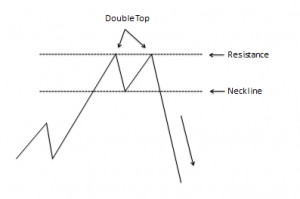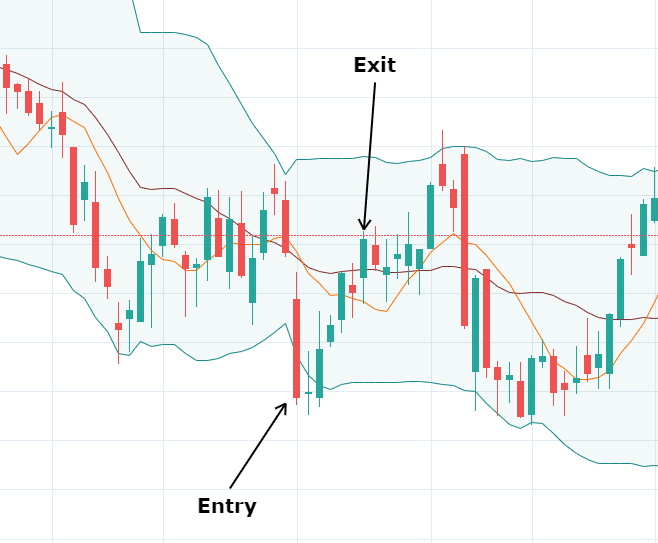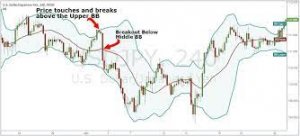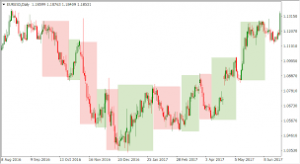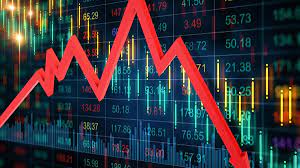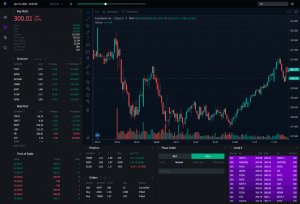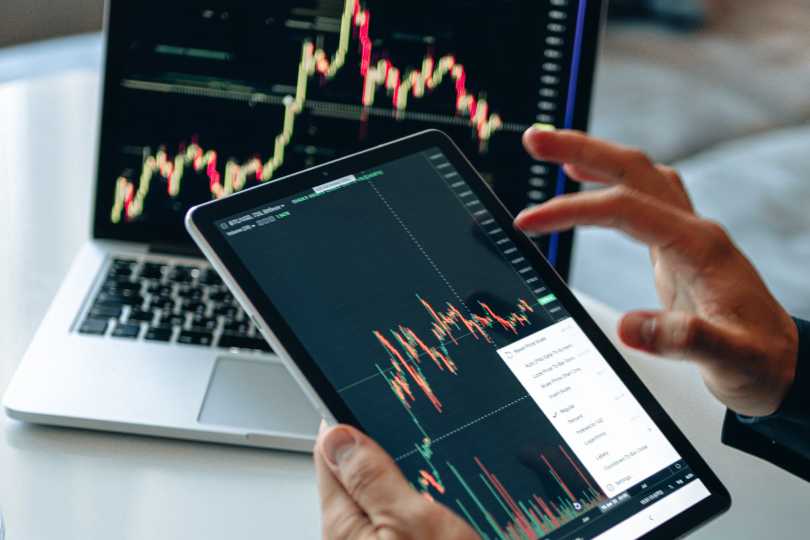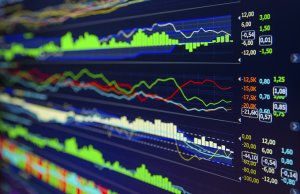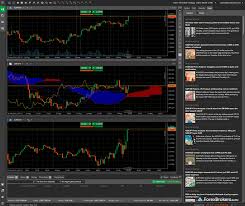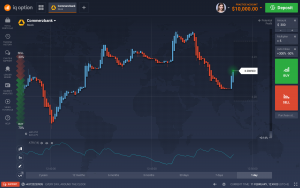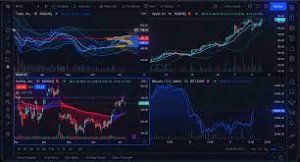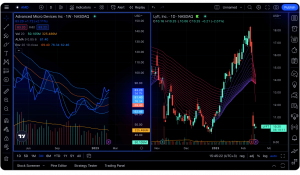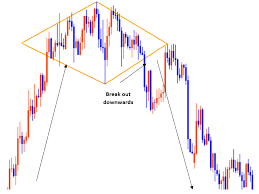
Introduction
The forex market is driven by price movements, and understanding these movements is crucial for successful trading. One powerful tool for analyzing price action is the identification of forex patterns. These patterns can provide valuable insights into market dynamics and help traders predict future price movements. In this comprehensive guide, we will explore various forex patterns, their characteristics, and how to effectively trade them to maximize profitability.
Understanding Forex Market Patterns
Forex market patterns are repetitive formations or structures that occur in price charts. These patterns reflect the psychology of market participants and can indicate potential trading opportunities. By recognizing and interpreting these patterns, traders can make informed decisions and capitalize on market movements.
Trend Continuation Patterns
Trend continuation patterns occur within an existing trend and suggest that the price is likely to continue its current direction. Let’s explore some common trend continuation patterns:
Flag Pattern: The flag pattern is characterized by a rectangular shape formed after a sharp price move. It indicates a temporary pause in the market before the trend resumes.
Pennant Pattern: Similar to the flag pattern, the pennant pattern is a short-term consolidation followed by a continuation of the trend. It has a triangular shape, with converging trend lines.
Rectangle Pattern: The rectangle pattern is formed when the price moves between parallel horizontal support and resistance levels. It signifies a period of consolidation before the trend continues.
To identify and trade trend continuation patterns, traders can look for specific price patterns and use indicators like moving averages or trend lines to confirm the validity of the pattern.
Trend Reversal Patterns
In the world of forex trading, understanding trend reversal patterns is essential for traders looking to capitalize on potential market reversals. These patterns, also known as forex patterns, can signal the end of an existing trend and the start of a new one, providing traders with valuable insights and trading opportunities. In this section, we will explore some common trend reversal patterns and discuss their significance in the forex market.
1. Head and Shoulders Pattern
The head and shoulders pattern is one of the most widely recognized and reliable forex patterns in forex trading. It consists of three distinct peaks, with the middle peak (the head) being higher than the other two (the shoulders). The line connecting the lows between the shoulders forms the neckline of the forex pattern.
This pattern occurs after an extended uptrend and suggests a potential reversal to a downtrend. Traders often look for a breakout below the neckline to confirm the forex pattern. The measured move of the head and shoulders pattern can provide an estimate of the potential downward target once the pattern completes.
2. Double Top and Double Bottom Patterns
Double top and double bottom patterns are also popular forex patterns used to identify trend reversals. A double top pattern forms when the price reaches a resistance level twice and fails to break above it. This failure to break higher indicates a potential reversal of the current uptrend. Conversely, a double bottom pattern occurs at support levels and signals a potential reversal of a downtrend.
Traders typically wait for the price to break below the neckline (in the case of a double top) or above the neckline (in the case of a double bottom) to confirm the forex pattern. The distance between the neckline and the highest point of the pattern can provide a target for the subsequent price move.
3. Triple Top and Triple Bottom Patterns
Similar to double top and double bottom patterns, triple top and triple bottom patterns indicate stronger reversal signals. These forex patterns occur when the price tests a resistance or support level three times before reversing. The more times the price fails to break above or below the level, the stronger the potential reversal signal.
Traders analyze the triple top or triple bottom pattern by drawing trendlines that connect the highs or lows of the pattern. A confirmed breakout above or below the trendlines validates the forex pattern and provides a potential target for the reversal move.
Using Forex Patterns in Trading Strategies
When incorporating forex patterns into your trading strategy, it is crucial to consider a few key factors. Here are some important points to keep in mind:
1. Confirmation: While recognizing a potential forex pattern is valuable, confirmation is essential. Traders often wait for a breakout or breakdown from the pattern’s neckline or trendlines to confirm the pattern. This confirmation helps reduce false signals and increases the probability of a successful trade.
2. Multiple Timeframes: Analyzing forex patterns across multiple timeframes can provide a more comprehensive view of the market. Higher timeframes can offer a broader perspective on the overall trend, while lower timeframes can provide more precise entry and exit points.
3. Support and Resistance Levels: Incorporating support and resistance levels into your analysis can enhance the effectiveness of forex patterns. If a pattern aligns with a significant support or resistance level, it strengthens the potential for a successful reversal trade.
4. Risk Management: Proper risk management is crucial when trading forex patterns. Set appropriate stop-loss levels to limit potential losses and ensure your risk-to-reward ratio is favorable before entering a trade.
Consolidation Patterns
Consolidation patterns occur when the price moves within a range, indicating a temporary pause in the trend. Here are a few common consolidation patterns:
Triangle Patterns: Triangle patterns form when the price oscillates between converging trend lines. They can be symmetrical, ascending, or descending, depending on the slope of the trend lines.
Rectangle Patterns: As mentioned earlier, rectangle patterns form when the price consolidates within parallel horizontal support and resistance levels. Traders can look for breakouts or breakdowns from these levels to identify trading opportunities.
Wedge Patterns: Wedge patterns are similar to triangle patterns but have a steeper slope. They indicate a temporary pause in the trend before a potential breakout or breakdown.
To trade consolidation patterns, traders can wait for a confirmed breakout or breakdown from the pattern, accompanied by an increase in trading volume.
Harmonic Patterns
Harmonic patterns are advanced trading patterns that incorporate Fibonacci ratios and geometric structures. These patterns offer precise entry and exit points. Let’s explore a few major harmonic patterns:
Butterfly Pattern: The butterfly pattern consists of precise Fibonacci retracement levels and price symmetry. It identifies potential reversal points within an existing trend.
Gartley Pattern: The Gartley pattern combines Fibonacci retracements and extensions to identify potential reversal zones. It has specific rules for validating the pattern’s completion.
Bat Pattern: The bat pattern is another harmonic pattern that involves precise Fibonacci retracements and extensions. It provides traders with potential entry and exit levels.
Harmonic patterns require a thorough understanding of Fibonacci ratios and pattern recognition skills. Traders often use specialized tools or indicators to identify and validate these patterns.
Forex Pattern Indicators and Tools
In the dynamic world of forex trading, having access to reliable indicators and tools is essential for identifying and trading forex patterns effectively. These indicators and tools not only help traders spot potential patterns but also assist in confirming their validity, thus enhancing trading accuracy. Let’s explore some popular forex pattern indicators and tools that can significantly improve pattern recognition and trading performance.
Moving Averages: Smoothing Out Price Data
Moving averages are versatile technical indicators that play a crucial role in identifying and confirming forex patterns. They help smooth out price data by calculating the average price over a specified period, providing a clear representation of the underlying trend. Moving averages are available in different types, including simple moving averages (SMA) and exponential moving averages (EMA), each offering its own benefits.
When it comes to forex pattern recognition, moving averages serve two primary purposes. First, they act as dynamic support and resistance levels, enabling traders to identify trend continuation patterns such as flags, pennants, or rectangles. Traders often look for price bounces or breakouts from moving averages as confirmation signals for these patterns.
Secondly, moving averages help determine the overall trend direction, aiding in the identification of trend reversal patterns. For instance, a crossover between short-term and long-term moving averages can signal a potential shift in trend direction, highlighting patterns like head and shoulders, double tops, or double bottoms.
By incorporating moving averages into their trading strategy, traders can improve their ability to spot and validate forex patterns, leading to more accurate trading decisions.
Trend Lines: Drawing Support and Resistance Levels
Trend lines are another valuable tool for recognizing and trading forex patterns. They help traders draw clear support and resistance levels on price charts, providing visual cues for potential pattern formations. Trend lines are typically drawn by connecting consecutive higher swing lows in an uptrend or lower swing highs in a downtrend.
When analyzing forex patterns, trend lines serve two primary purposes. Firstly, they help identify trend continuation patterns such as ascending triangles, descending triangles, or symmetrical triangles. These patterns form within the boundaries of trend lines, representing a temporary consolidation before the price resumes its trend.
Secondly, trend lines assist in identifying trend reversal patterns like wedges or broadening formations. These patterns are characterized by a deviation from the existing trend, and the breakout or breakdown from the trend line can signal a potential reversal.
Traders often combine trend lines with other indicators, such as oscillators or volume analysis, to strengthen their pattern recognition and confirmation. By incorporating trend lines into their analysis, traders gain valuable insights into potential pattern formations and improve their ability to capitalize on trading opportunities.
Oscillators: Identifying Overbought and Oversold Conditions
Oscillators are technical indicators that help identify overbought and oversold conditions in the forex market. These indicators provide valuable insights into market sentiment and can complement the identification of forex patterns.
Popular oscillators include the Relative Strength Index (RSI), Stochastic Oscillator, and the Moving Average Convergence Divergence (MACD). These indicators measure the speed and magnitude of price movements, enabling traders to determine when a currency pair may be due for a reversal.
When used in conjunction with forex pattern analysis, oscillators can help confirm pattern formations and provide additional entry and exit signals. For example, a double top pattern accompanied by bearish divergence on the RSI can strengthen the validity of the pattern and provide a timely selling opportunity.
It is important to note that oscillators work best when used in conjunction with other indicators and tools. Traders should look for convergence or divergence between the oscillator and the price action to validate the presence of a pattern and make more informed trading decisions.
Pattern Recognition Tools: Automating Pattern Detection
Pattern recognition tools are invaluable for traders seeking to identify forex patterns with ease and efficiency. Many trading platforms offer built-in pattern recognition tools that automatically scan price charts and highlight potential patterns.
These tools employ sophisticated algorithms to detect and identify patterns such as double tops, head and shoulders, wedges, and more. They eliminate the need for manual pattern identification, saving time and reducing the chances of missing trading opportunities.
Pattern recognition tools often come with customizable settings, allowing traders to specify the types of patterns they wish to focus on and the timeframes they prefer. This flexibility enables traders to adapt to different trading strategies and time horizons.
While pattern recognition tools can significantly enhance efficiency, it is important to note that manual confirmation and analysis are still necessary. Traders should always validate the identified patterns using other indicators, tools, or chart patterns before executing trades.
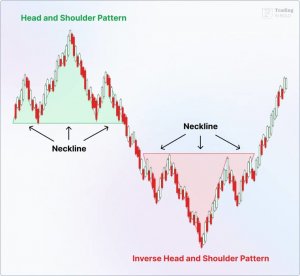
Developing a Forex Pattern Trading Strategy
Developing a well-defined trading strategy is essential for effectively trading forex patterns. A solid strategy helps traders make informed decisions, manage risks, and increase the chances of success. In this section, we will explore the key steps involved in developing a forex pattern trading strategy while emphasizing the importance of forex patterns throughout the process.
1. Identify and Understand Forex Patterns
The first step in developing a forex pattern trading strategy is to identify and understand different forex patterns. Forex patterns are repetitive formations or structures that occur in price charts, providing insights into market dynamics. By recognizing these patterns, traders can anticipate potential price movements and take advantage of trading opportunities.
There are various types of forex patterns, including trend continuation patterns, trend reversal patterns, consolidation patterns, and harmonic patterns. Each pattern has its own characteristics and implications for trading decisions. It’s crucial to familiarize yourself with these patterns and their interpretations to effectively incorporate them into your trading strategy.
2. Select Preferred Forex Patterns
Once you understand the various forex patterns, the next step is to select the patterns that resonate with your trading style and align with your risk tolerance. It’s important to choose patterns that you feel comfortable trading and have a good understanding of. Trying to trade too many patterns may lead to confusion and ineffective decision-making.
Consider focusing on a few key patterns that have a high probability of success and offer favorable risk-to-reward ratios. This approach allows you to specialize and become proficient in trading specific patterns. Remember, quality is more important than quantity when it comes to trading forex patterns.
3. Define Entry and Exit Criteria
To effectively trade forex patterns, you need to define clear entry and exit criteria. Entry criteria refer to the conditions that must be met for entering a trade based on a specific pattern. This may include factors such as the formation of the pattern, confirmation from technical indicators, or price reaching a certain level.
Exit criteria determine when to exit a trade, including profit targets and stop-loss levels. Having predefined exit criteria helps traders lock in profits and limit potential losses. It’s crucial to set realistic profit targets based on historical price behavior and consider placing stop-loss orders to protect capital in case the trade goes against you.
4. Incorporate Risk Management Techniques
Risk management is a vital component of any trading strategy, including forex pattern trading. It’s important to implement proper risk management techniques to protect your capital and minimize potential losses.
One common risk management technique is position sizing, which involves determining the appropriate amount of capital to allocate to each trade based on your risk tolerance. This ensures that no single trade has the potential to significantly impact your overall portfolio.
Additionally, setting stop-loss orders is crucial to limit potential losses. A stop-loss order is placed at a predetermined price level, and it automatically exits the trade if the price reaches that level. This helps prevent emotions from influencing your decision-making and protects you from excessive losses.
5. Backtest and Optimize the Strategy
Before implementing your forex pattern trading strategy in live trading, it’s important to backtest and optimize it using historical data. Backtesting involves simulating trades based on historical price data to assess the strategy’s performance.
During the backtesting process, pay attention to the profitability of trades, the frequency of winning trades, and the drawdowns experienced. Analyze the results to identify any areas for improvement or optimization. This could include adjusting entry and exit criteria, modifying risk management parameters, or refining the selection of forex patterns.
It’s crucial to remember that past performance does not guarantee future results. However, backtesting provides valuable insights into the historical performance of your strategy and helps you make informed adjustments.
6. Monitor and Adapt to Market Conditions
Once you start implementing your forex pattern trading strategy in live trading, it’s important to continuously monitor the market conditions and adapt your strategy accordingly. The forex market is dynamic, and patterns may behave differently in different market environments.
Practical Tips for Trading Forex Patterns
When it comes to trading forex patterns, having a solid understanding of the market and implementing effective strategies is essential. In this section, we will delve deeper into practical tips that can help you optimize your trading approach and capitalize on forex patterns.
1. Master Pattern Recognition: Developing the skill to recognize forex patterns is crucial for successful trading. Take the time to study different types of patterns, understand their characteristics, and practice identifying them on price charts. The more familiar you become with various patterns, the better equipped you’ll be to spot potential trading opportunities.
2. Validate Patterns with Multiple Timeframes: While a pattern may appear prominent on a specific timeframe, it’s important to validate its significance by analyzing multiple timeframes. Patterns that align across different timeframes carry more weight and increase the probability of a successful trade. Pay attention to patterns that show confluence, reinforcing your trading decisions.
3. Combine Patterns with Other Technical Indicators: While forex patterns can be powerful on their own, combining them with other technical indicators can enhance your trading accuracy. Consider using indicators like moving averages, oscillators, or volume indicators to confirm the validity of a pattern and to support your entry and exit decisions.
4. Use Risk Management Techniques: Managing risk is a fundamental aspect of successful trading. Implementing proper risk management techniques when trading forex patterns is crucial to protect your capital. Set appropriate stop-loss orders to limit potential losses and establish profit targets to secure your gains. Consider using trailing stops to lock in profits as the trade moves in your favor.
5. Trade High-Probability Patterns: Not all patterns are created equal. Some patterns have higher success rates than others. Focus on trading high-probability patterns that have a track record of producing reliable results. These patterns often exhibit clear and well-defined structures and have a history of generating profitable trades. Prioritize quality over quantity when selecting trades.
6. Consider Price Action Context: When analyzing forex patterns, it’s important to consider the broader price action context. Take into account support and resistance levels, trendlines, and other significant price levels. Understanding the overall market conditions and the context in which a pattern forms can provide valuable insights and increase the likelihood of a successful trade.
7. Continuously Monitor and Adapt: The forex market is dynamic and constantly evolving. Regularly monitor your trades and adjust your strategy as needed. Keep an eye on market news, economic events, and any factors that may impact the currency pairs you’re trading. Being adaptable and open to refining your approach will help you stay ahead of the game.
8. Maintain Trading Discipline: Emotions can often cloud judgment and lead to impulsive trading decisions. Stick to your trading plan, follow your predefined rules, and avoid making emotionally driven trades. Maintain discipline by adhering to your risk management principles and focusing on long-term profitability rather than short-term gains.
9. Practice Patience: Trading forex patterns requires patience. Not every pattern will result in an immediate profit. Be patient and wait for the optimal entry point based on your trading strategy. Avoid chasing trades or forcing trades when the pattern’s criteria are not met. Remember, it’s better to miss a trade than to enter a low-probability trade.
10. Continuously Learn and Improve: Forex trading is a journey of continuous learning and improvement. Stay updated with market trends, read educational resources, attend webinars or seminars, and engage with a community of traders. Embrace a growth mindset and be willing to adapt your strategies based on new information and market dynamics.
Conclusion
Forex patterns provide valuable insights into market dynamics and offer profitable trading opportunities. By understanding and effectively trading these patterns, traders can enhance their trading strategies and increase their chances of success. Whether you focus on trend continuation, trend reversal, consolidation, or harmonic patterns, the key is to combine technical analysis with sound risk management principles. Embrace the power of forex patterns, continuously refine your skills, and unlock the potential for consistent profits in the dynamic forex market.

